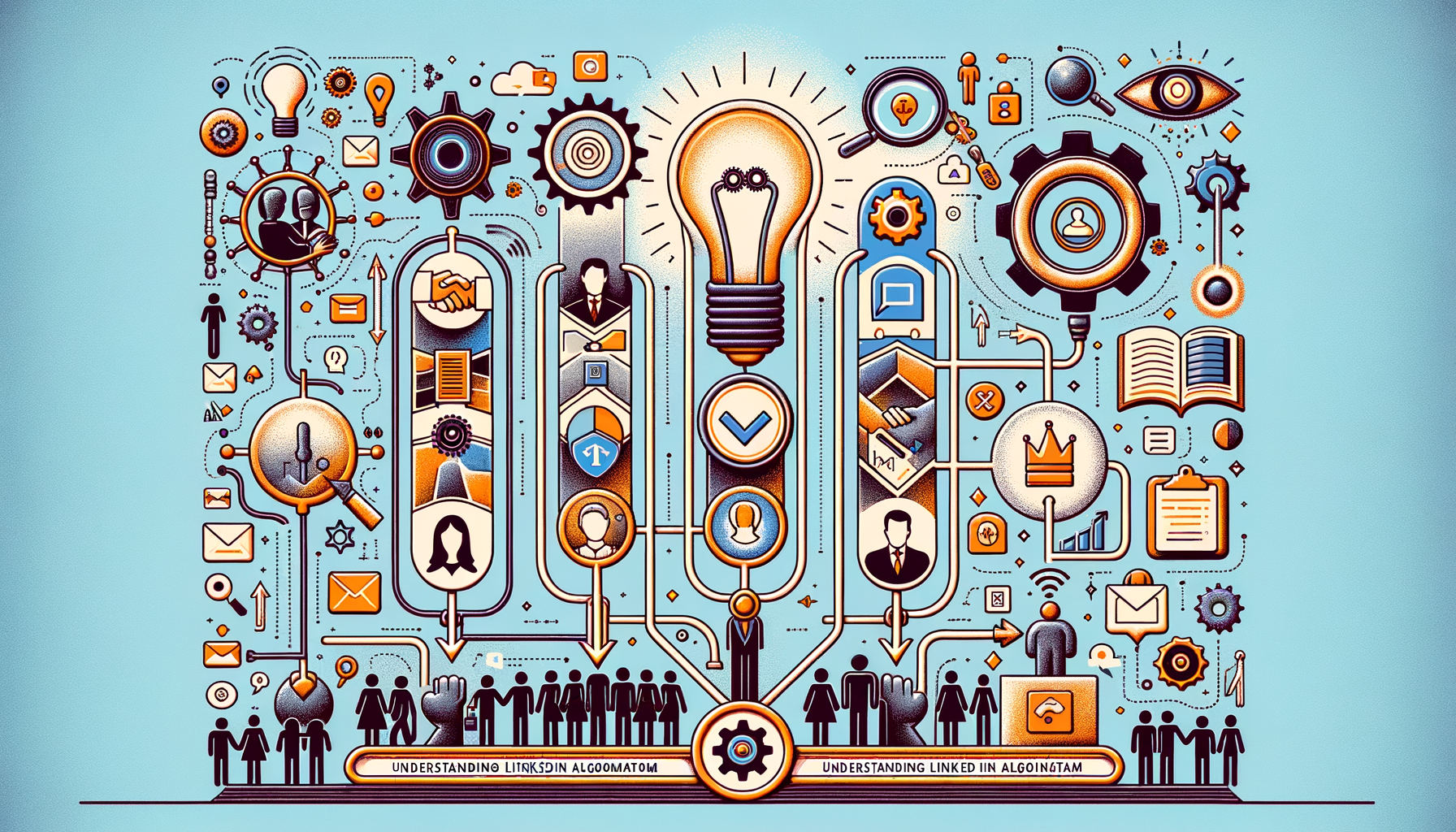“Mastering the LinkedIn Algorithm: Tips and Strategies for Greater Visibility”

LinkedIn, the professional networking platform, uses a unique algorithm to manage and distribute content among its vast populace of users, hence, understanding how this algorithm functions can greatly enhance one’s networking or marketing success on the platform.
Every time you make a post on LinkedIn, the algorithm steps in to determine the breadth of its distribution through a sophisticated evaluation process that aims to share beneficial, non-spammy content to the most relevant audience.
**1. Phases of the LinkedIn Feed Ranking Algorithm**
The LinkedIn algorithm is programmed to handle all content in an initial, intermediate and final stage, in that order.
**Initial Stage: During this stage, the algorithm categorizes the posted content as either ‘spam’, ‘low-quality’ or ‘clear’. If it’s deemed as clear, it progresses to the next stage.
**Intermediate Stage:** This stage further evaluates the contents based ‘virality’. The algorithm analyses several factors – such as the relevance of the content to your connections, the credibility and network influence of the poster, content type – text, image, link or video – amongst other factors. Based on these evaluations, the content either advances to the last stage or gets demoted.
**Final Stage:** Here, deeper human-led checks primarily concerning value, relevance and chances of virality are performed before determining the final extent of the content’s distribution.
**2. Key Factors Influencing the LinkedIn Algorithm**
Understanding some of the essential factors affecting the algorithm’s function can help you tailor your posts to gain maximum visibility.
**Personal Connections:** LinkedIn places a priority on personal interaction. The number of people you are directly connected with plays a significant role in your content visibility scope. When you first post content on LinkedIn, the platform initially exposes it to a small segment of your network. If this group interact positively, the platform extends the visibility to a larger audience in your direct connections.
**Relevance Score:** LinkedIn provides a ‘relevance score’ for each post. This score is based upon multiple factors including behavior and preferences of your network, the kind of content you typically engage with or ignore, the relationship value between you and the poster, and the popularity or virality of the post within your network. Crafting content that resonifies with your audience can thus significantly boost your score.
**Engagement Statistics:** Engagement statistics such as the number of likes, comments, shares and clicks your post garners heavily influence your content’s distribution. The algorithm treats each interaction as a signal of approval, hence, higher engagement rates expand the content’s visibility to a larger audience.
**3. Ideating Strategy for LinkedIn’s Algorithm**
Having understood how LinkedIn’s algorithm functions, it’s time to put this knowledge into practice by designing strategy for optimum visibility and engagement.
**Timely Engagement:** Quickly responding to comments on your posts or actively participating in discussions can help increase engagement rates on your posts. Be open to sharing advice, resources and starting conversations on popular topics.
**Personal Interaction:** Since LinkedIn values direct connections and personal interaction, it’s effective to personalize not just your connections, but your communication as well. When content resonates at an individual level, it’s more likely to generate an interaction from your audience.
**Quality Over Quantity:** Content deemed as valuable and relevant by your audience garners the most engagement. Instead of focusing on quantity, prioritize the creation of high-quality content that could potentially capture interest or offer a benefit to your connections.
**4. Utilizing Different Content Types**
LinkedIn supports different types of content – articles, text posts, images, videos, and documents. Mixing up your communication with different content types increases chances of engaging different segments of your audience.
**Texts and Articles:** Longer-form articles and shorter-form text posts cater to different types of readers and help maintain a balanced content approach. While text posts can stir quick conversations, articles allow you to delve deeper into important issues or topics.
**Images and Videos:** Images are great at capturing immediate attention, and videos have shown to drive more engagement. It’s recommended to utilize direct uploads instead of external links for videos to maximize reach.
**Documents:** LinkedIn allows users to post a variety of documents including PDFs, PowerPoints, and Word Documents which provide a unique way to share in-depth information.
**5. The Pros and Cons of Using Automation**
Some individuals and organizations may consider automating their LinkedIn activities to boost their presence. While automation can help you keep up with regular posting and manage repetitive tasks, it comes with certain disadvantages.
Using automation excessively can result in content that feels robotic and impersonal, which is at odds with LinkedIn’s emphasis on genuine personal interaction. There’s also the risk of breaching LinkedIn’s user agreement, which explicitly discourages automation.
**Conclusion**
Mastering LinkedIn’s complex feed algorithm may seem arduous, but it can be boiled down to a simple principle: Consistently share valuable, relevant content and genuinely interact with your network. Persistence is key to building influence and engagement, so don’t expect instant results. Trial, error, and adaptation form part of every successful digital marketing strategy, and LinkedIn is no different.

Recent Comments